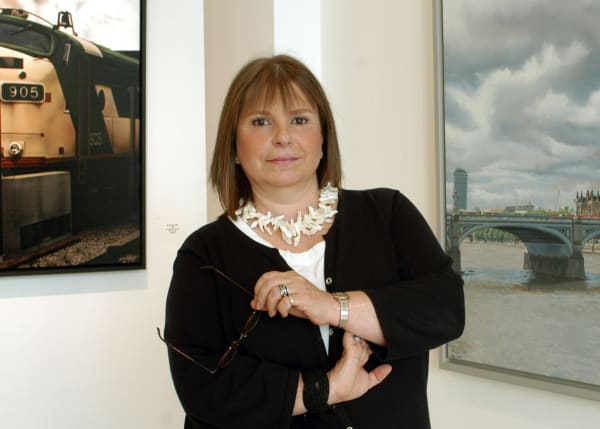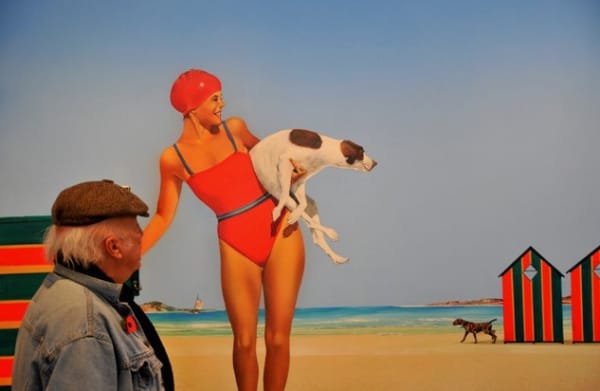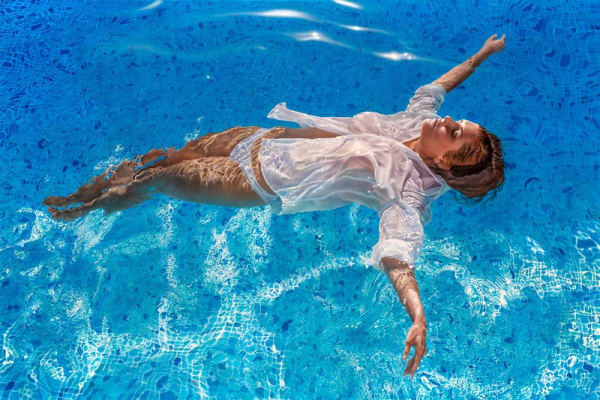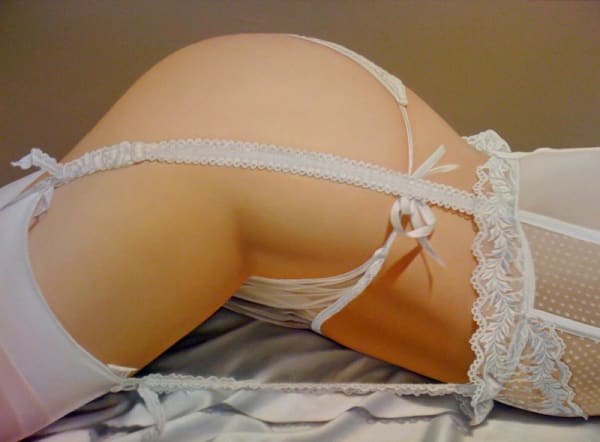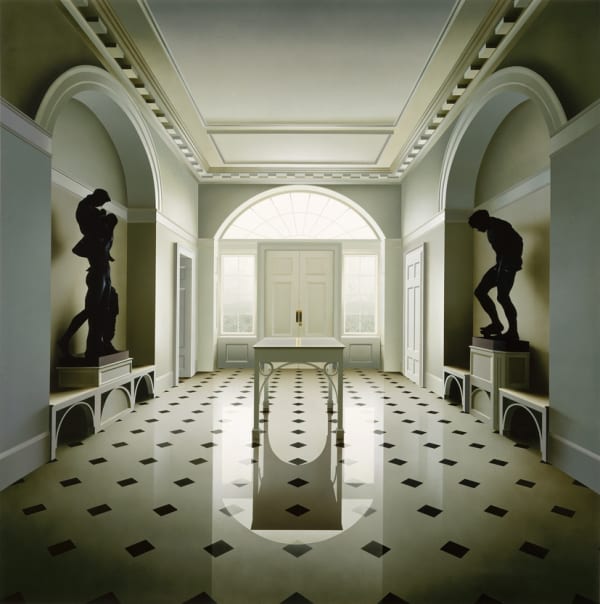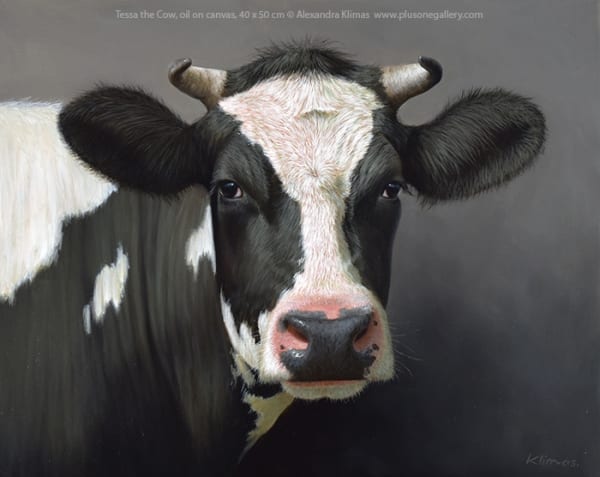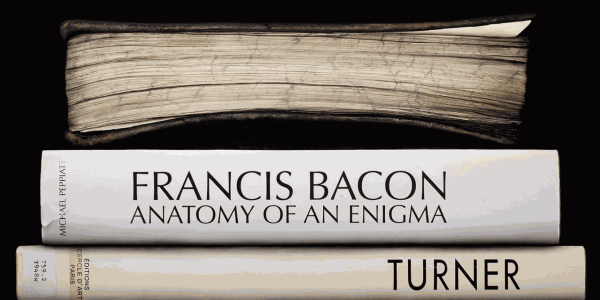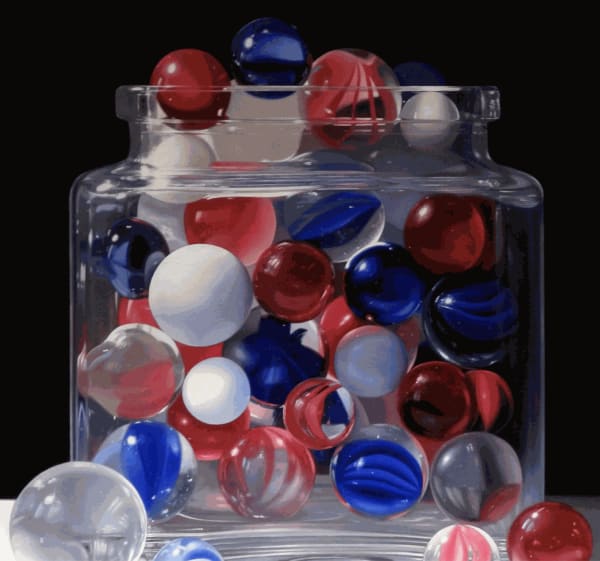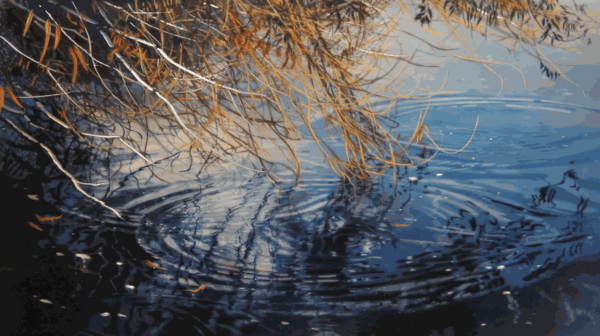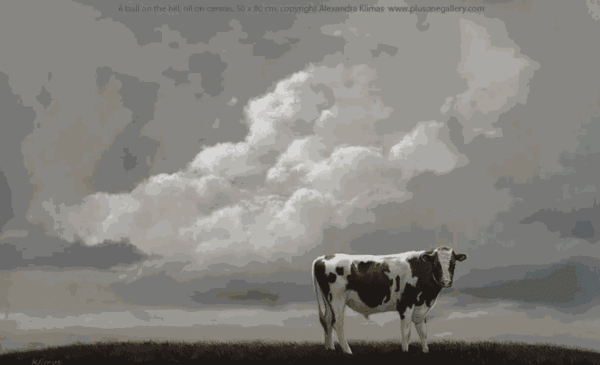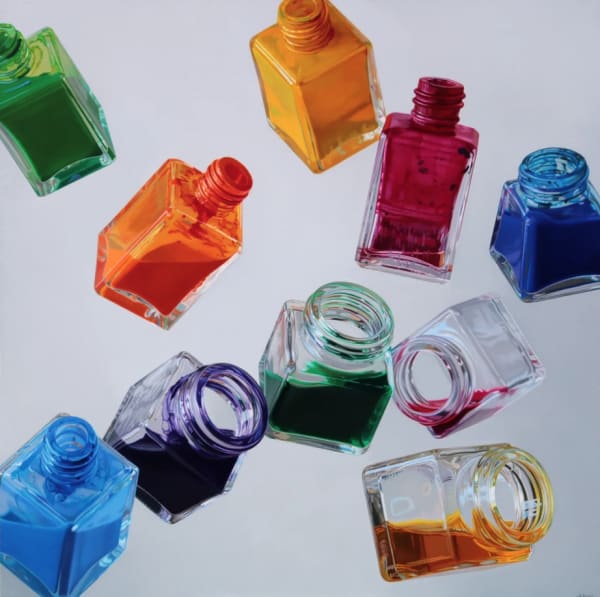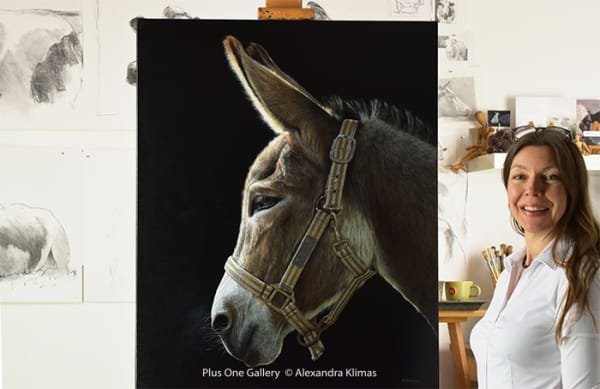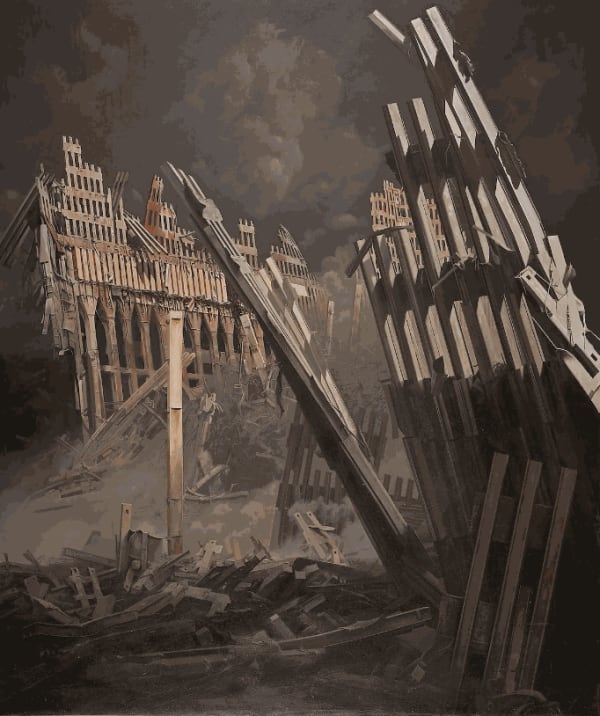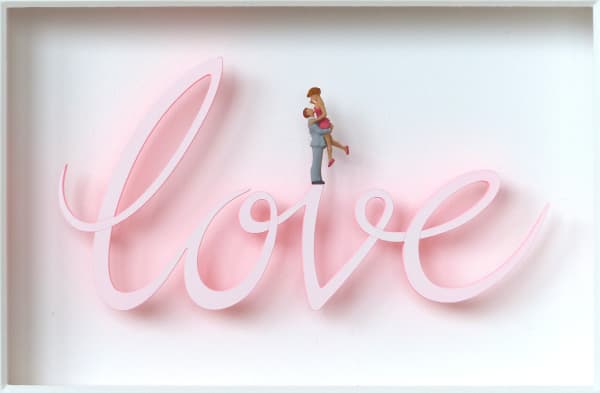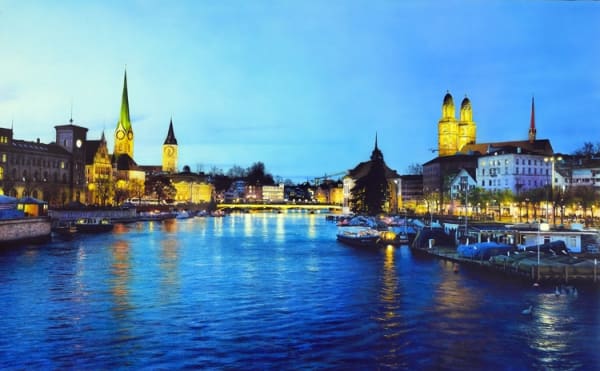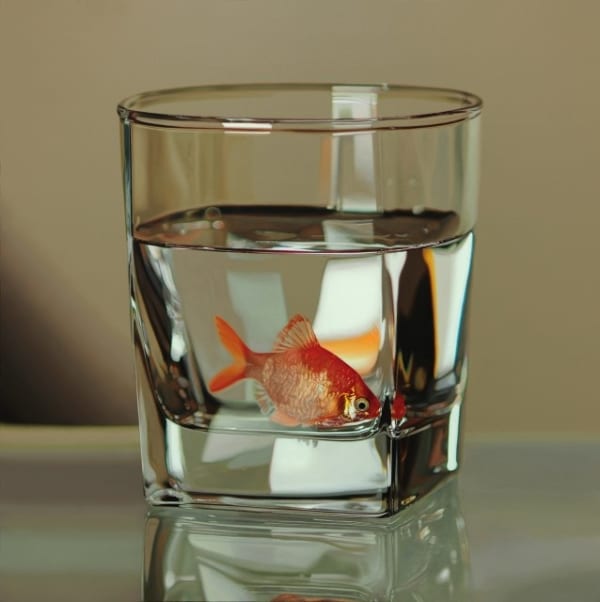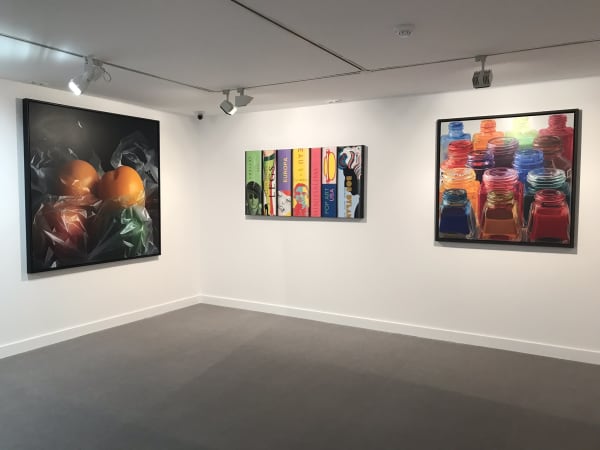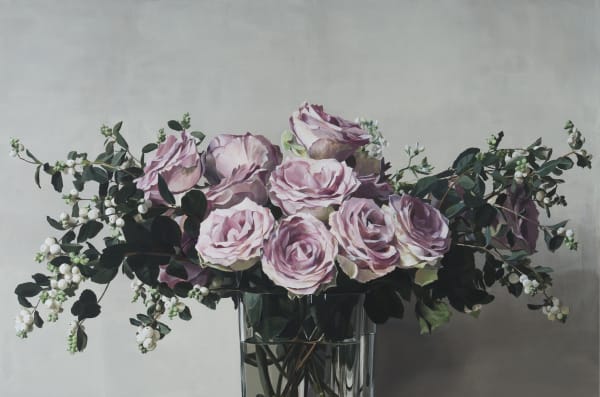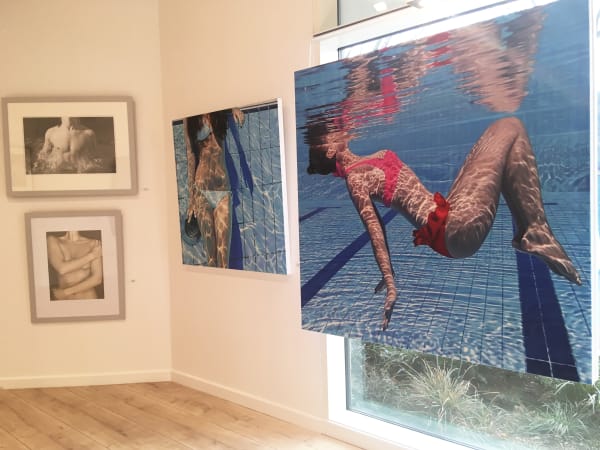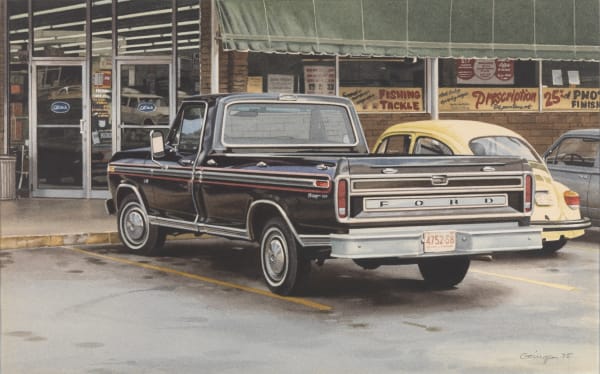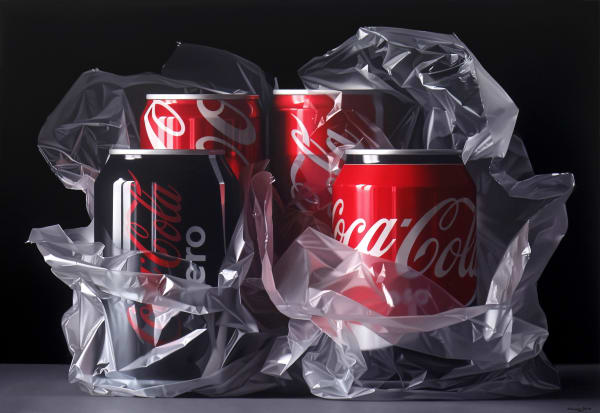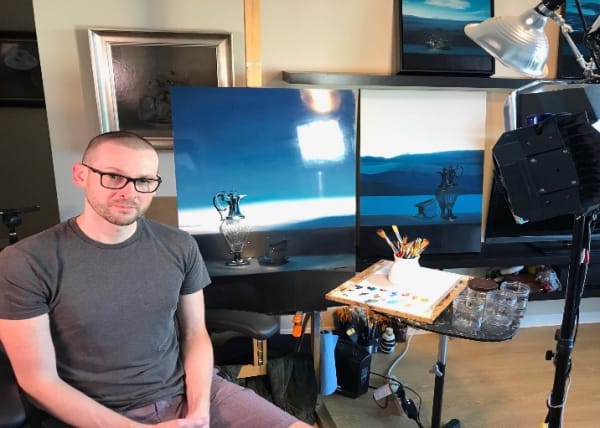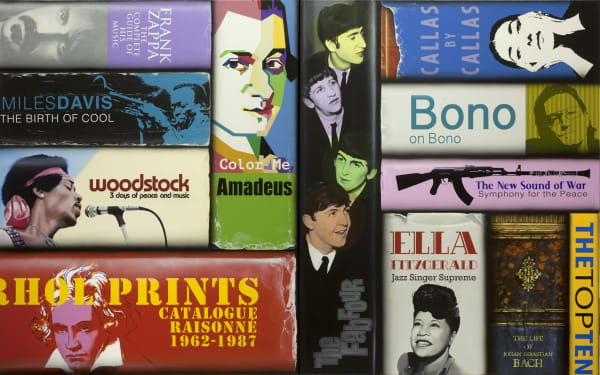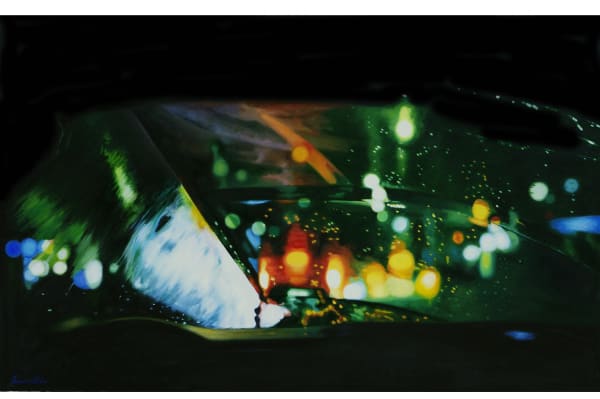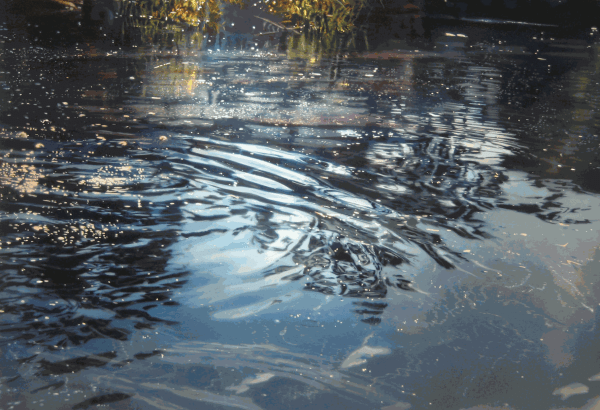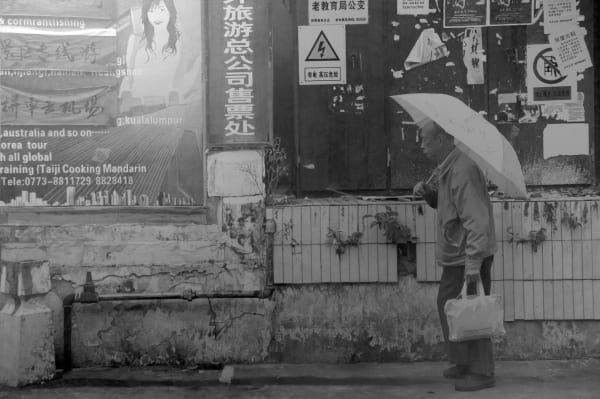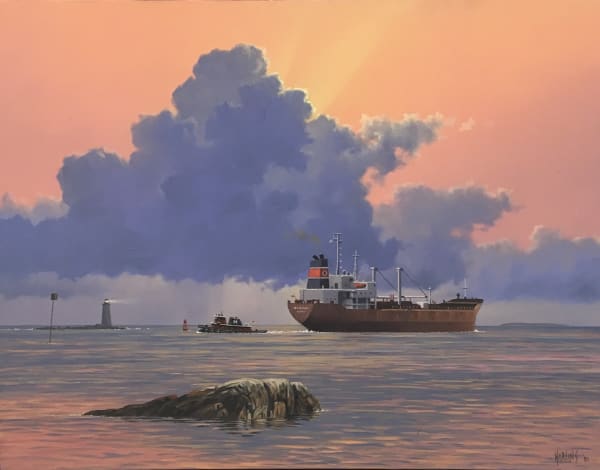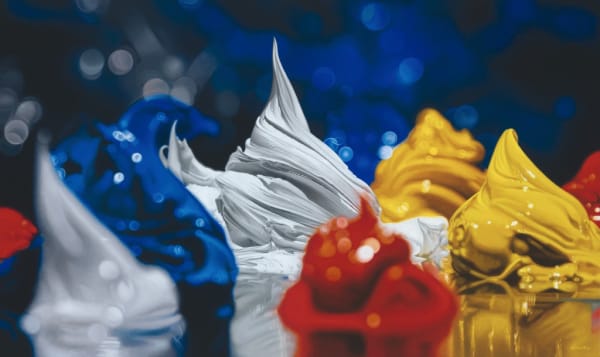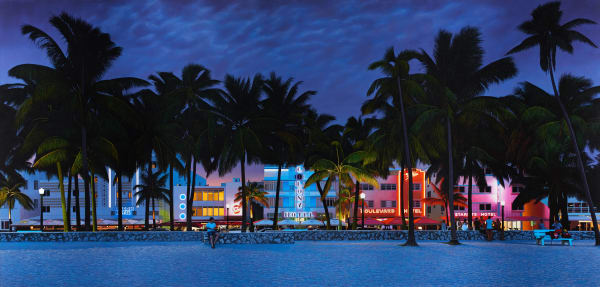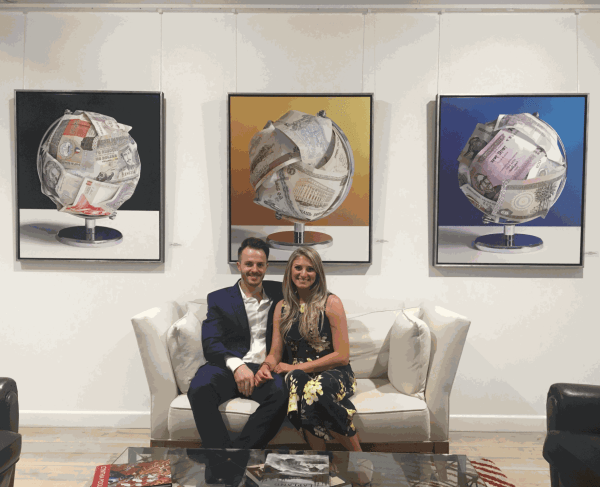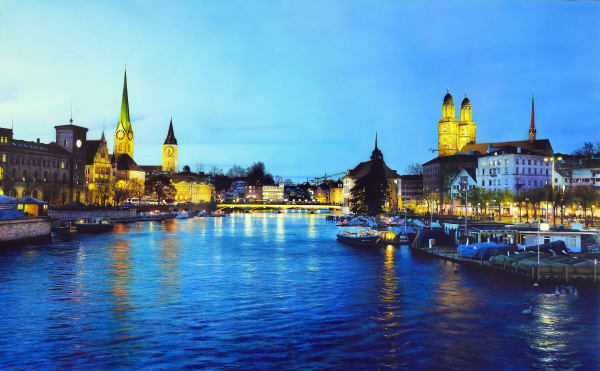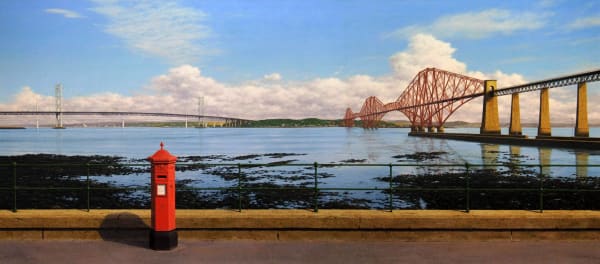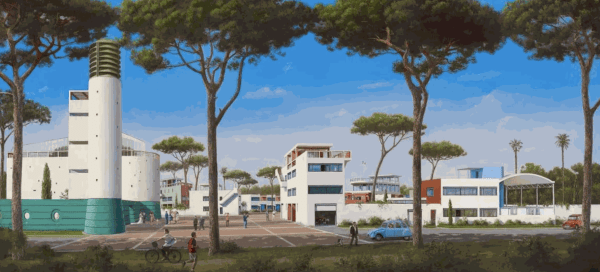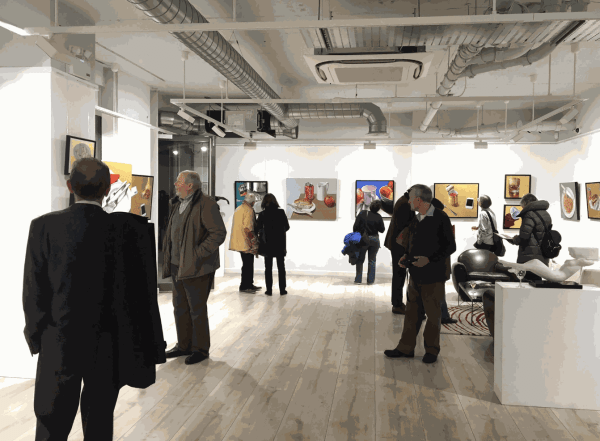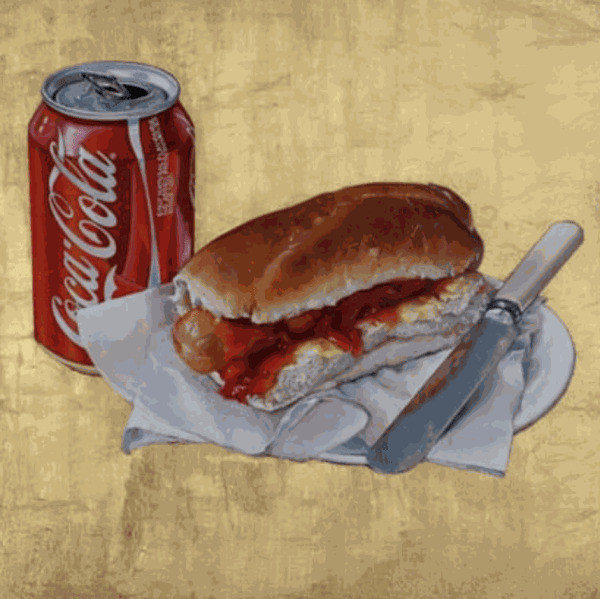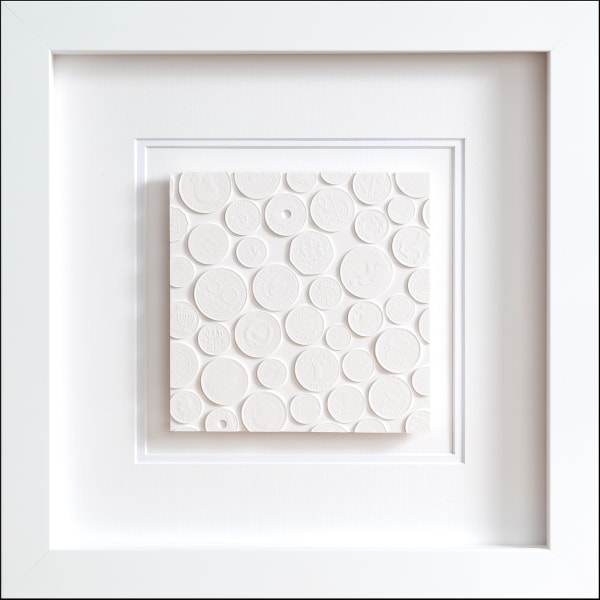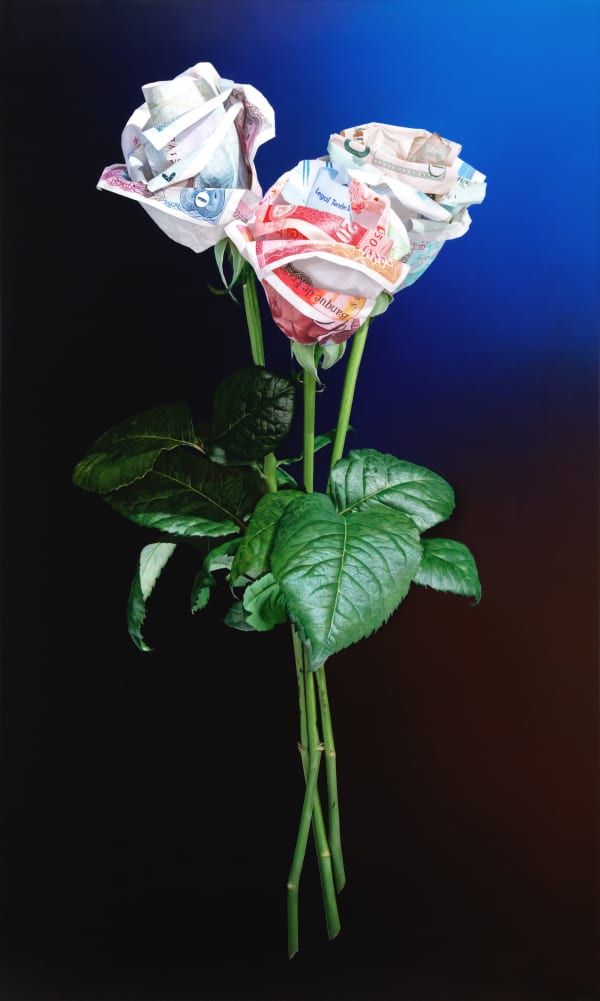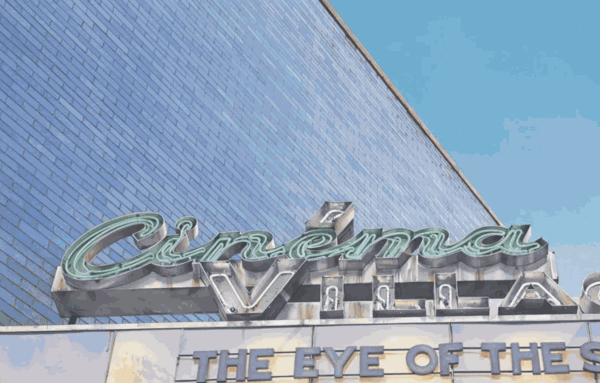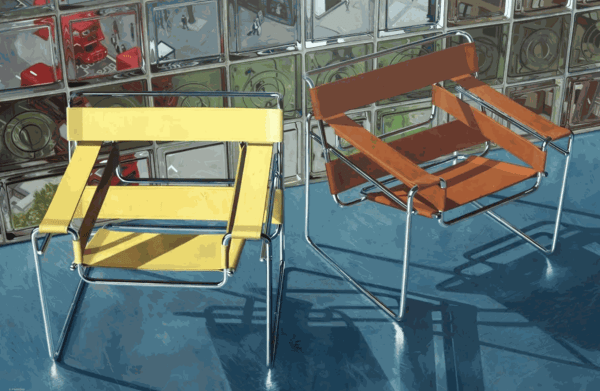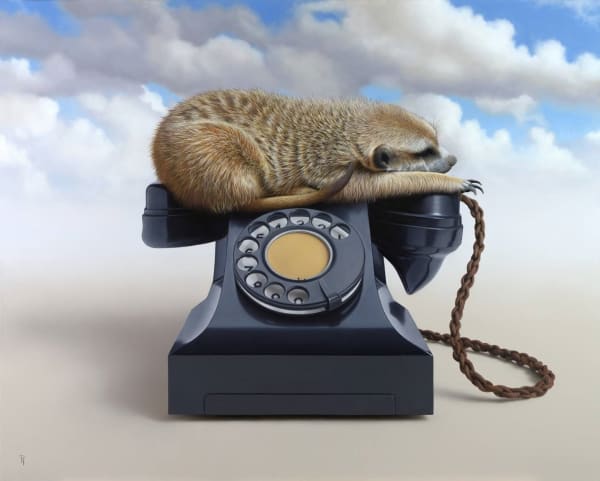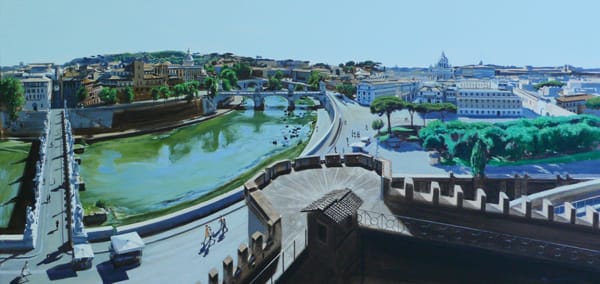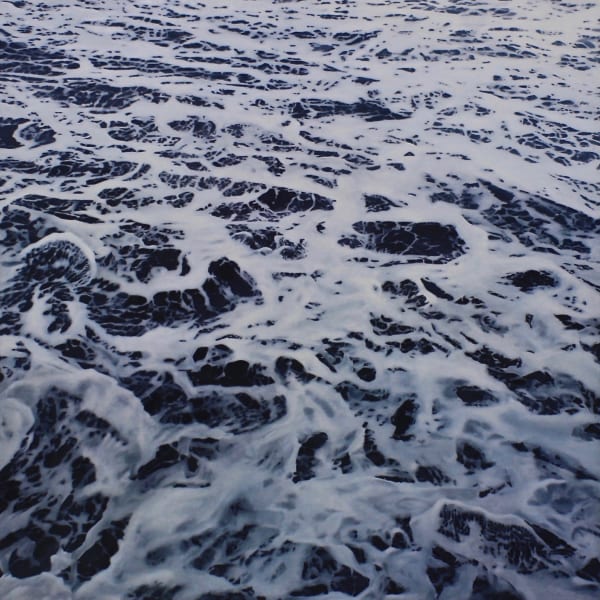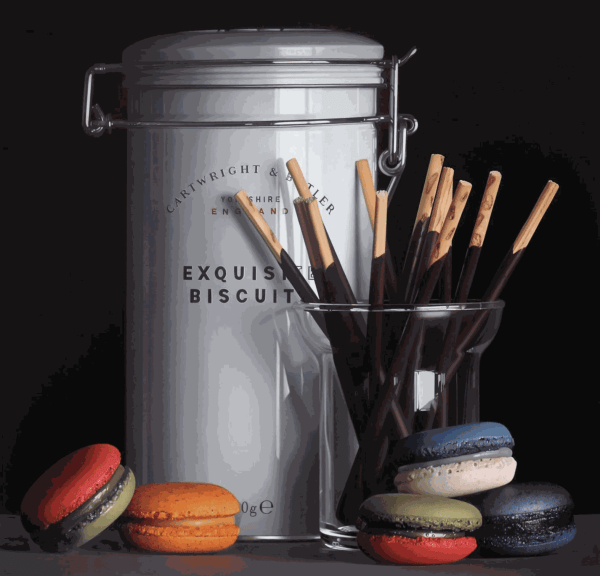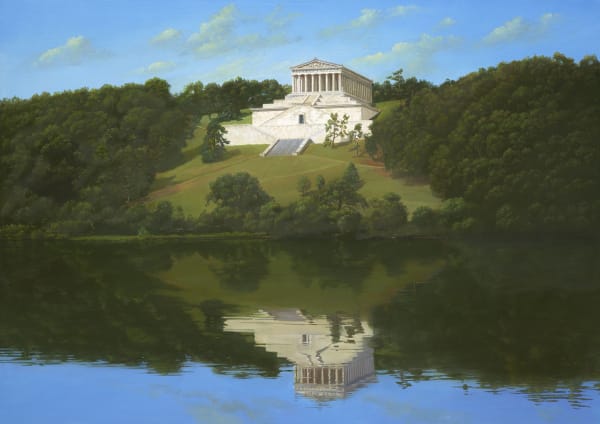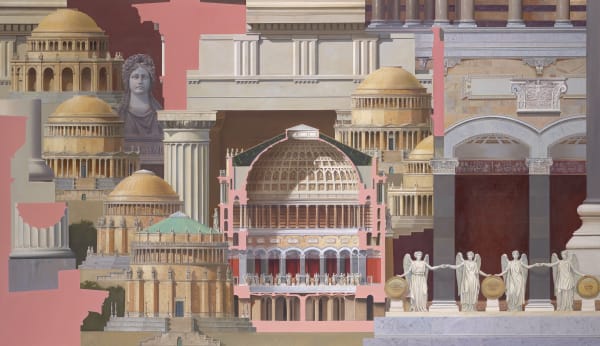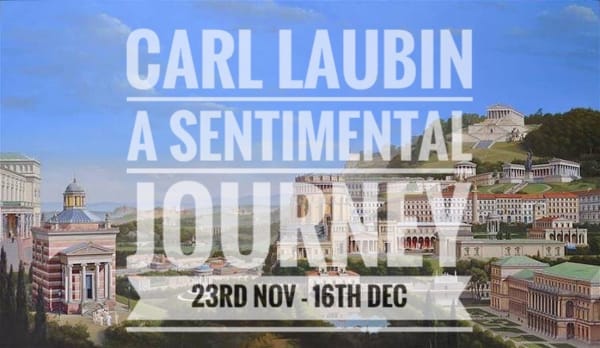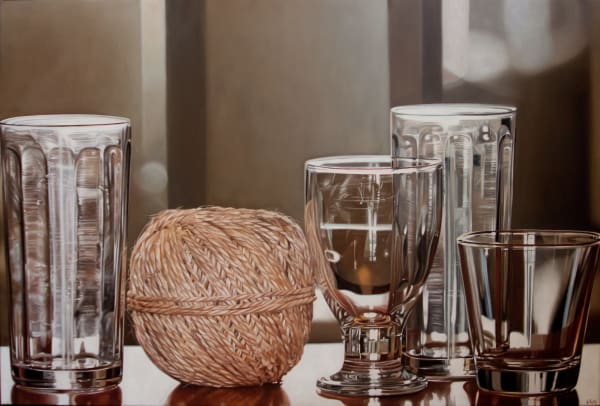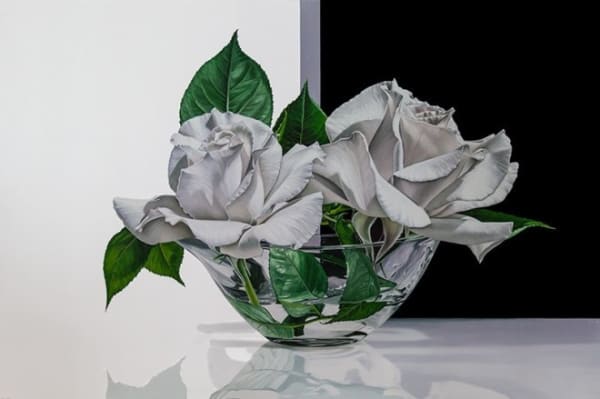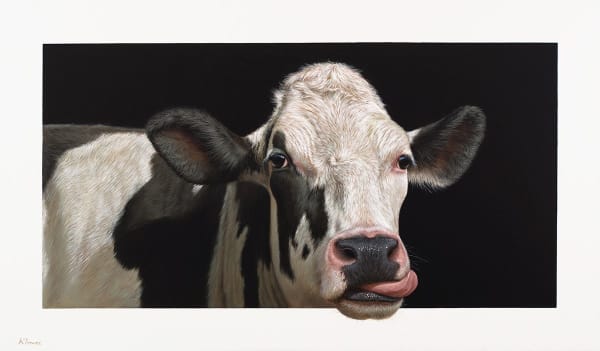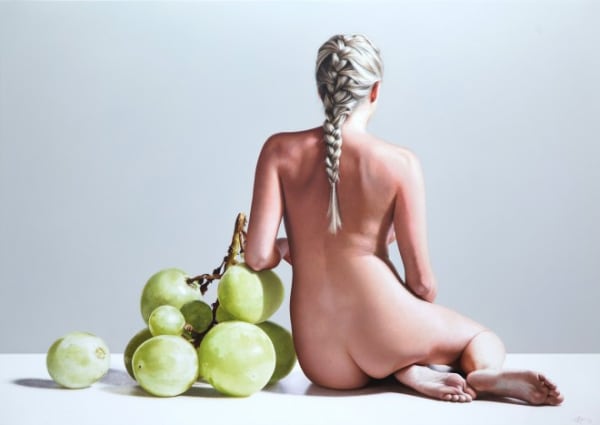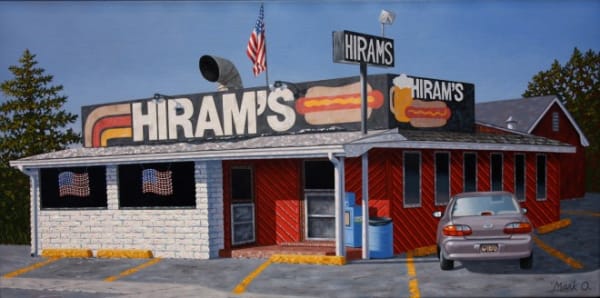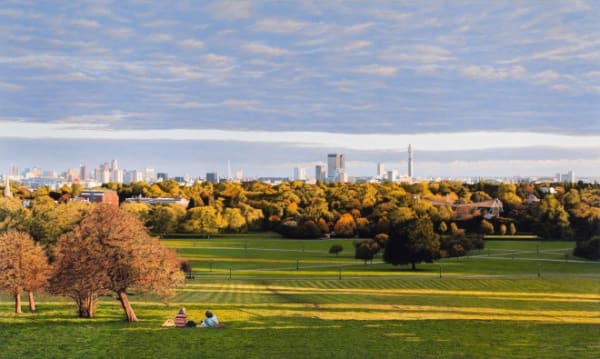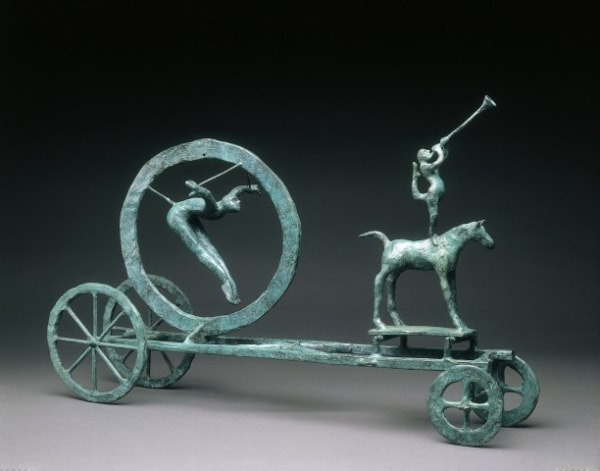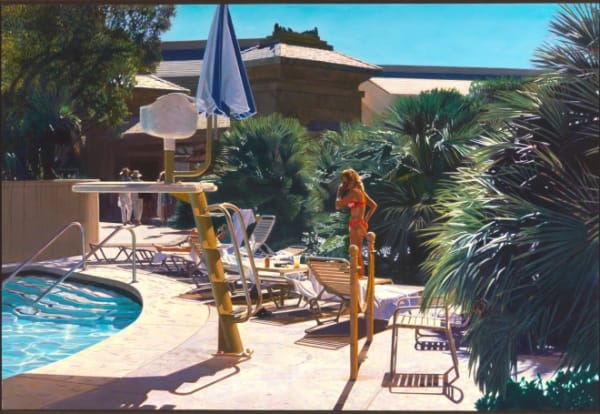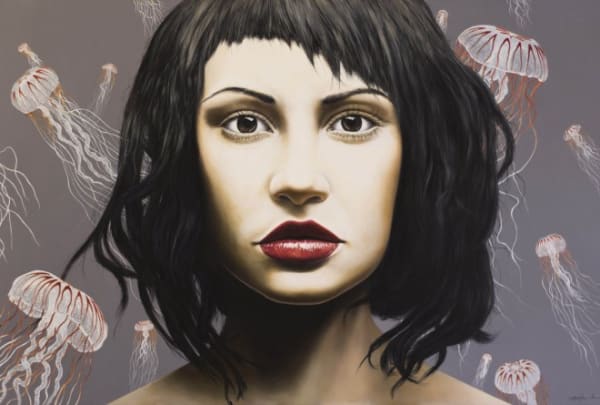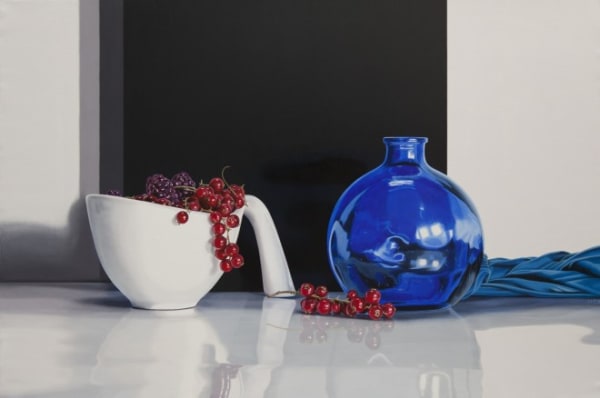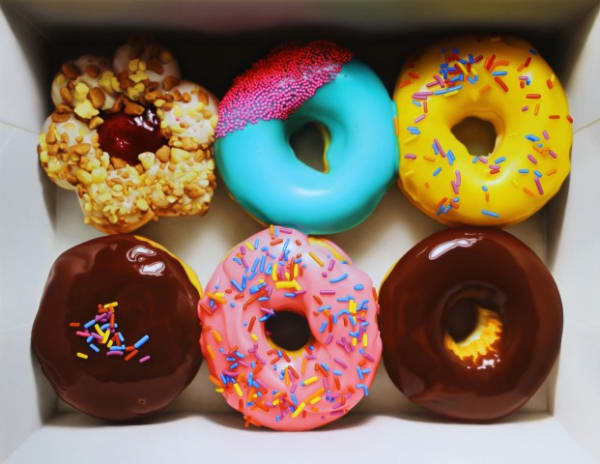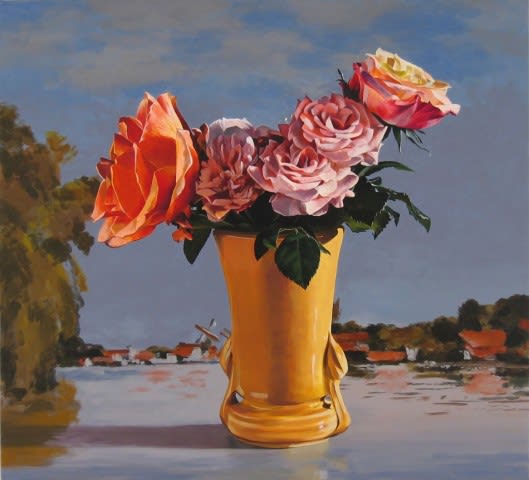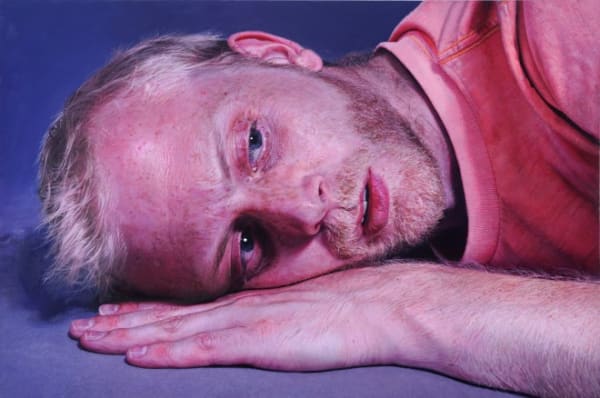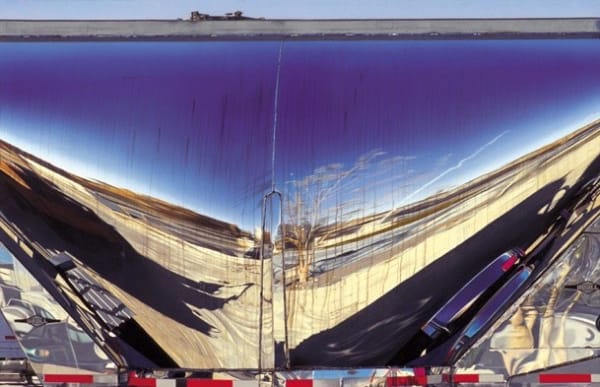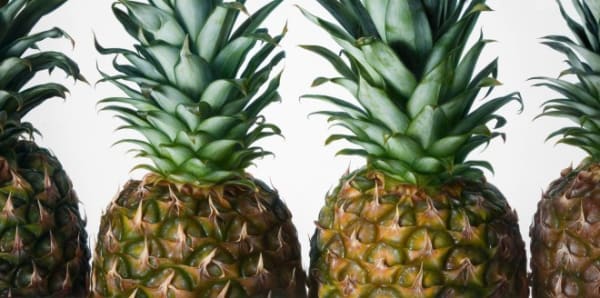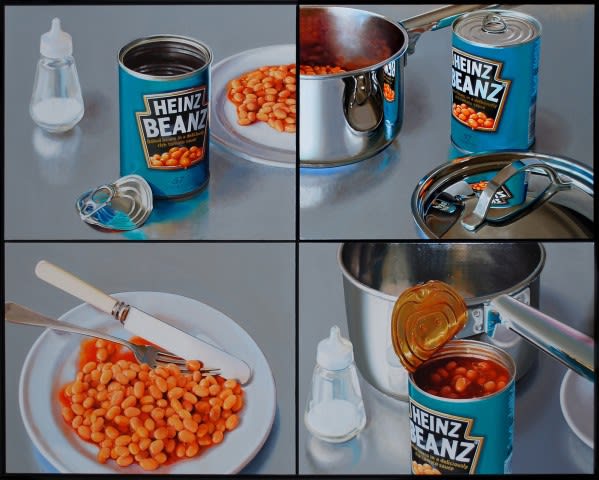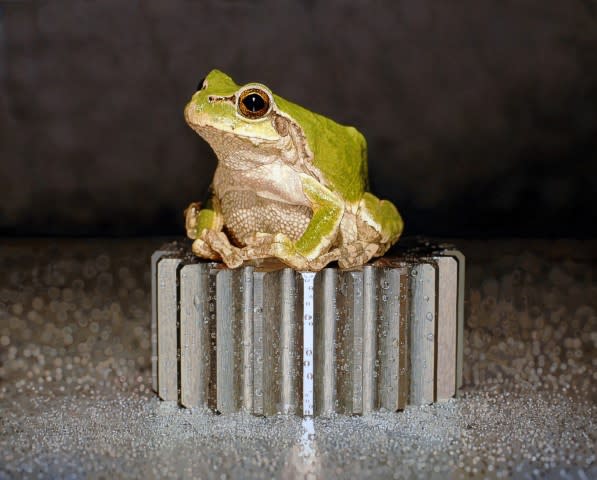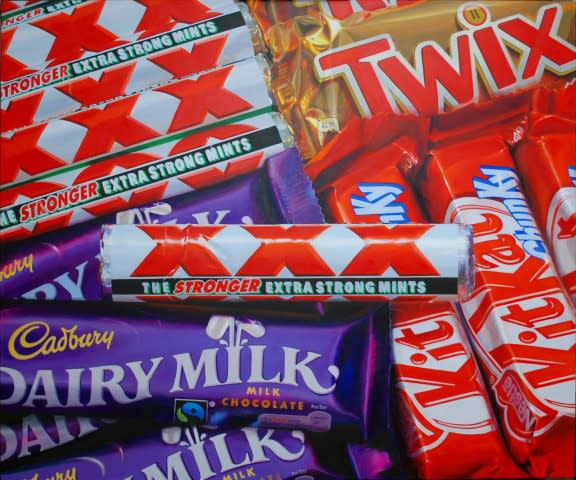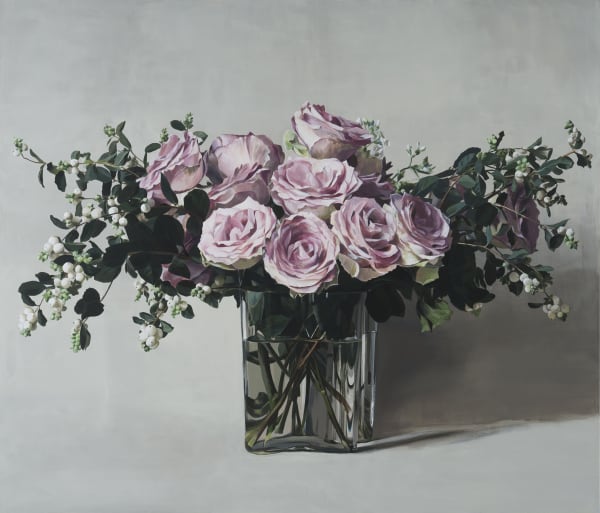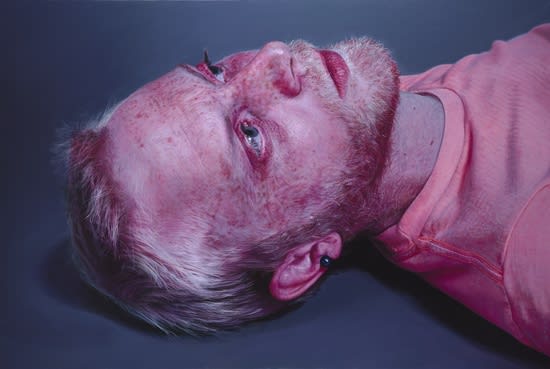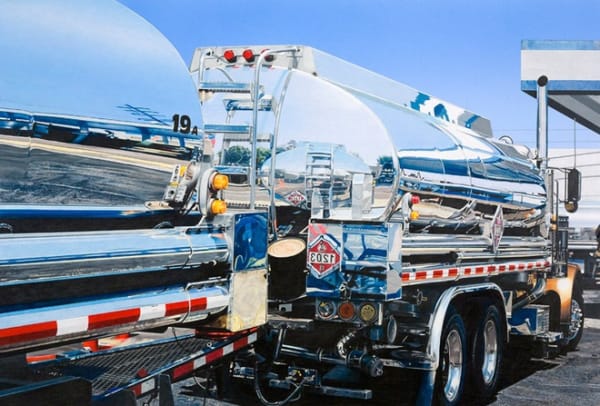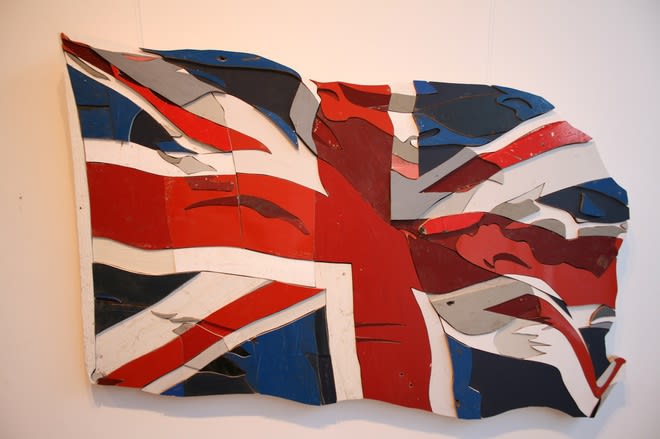
Hyperrealism is a relatively new art movement having first emerged from the photorealism movement of the 1970s. Primarily applied to the independent art style that developed in the western world following the turn of the 21st century, hyperrealism is a genre of painting resembling a high-resolution photograph.
The transformation from photorealism was fundamentally an advancement in the techniques used to obtain super-realistic paintings and the addition of narrative and emotion into work. As the movement continues to evolve, more and more different media are being incorporated into hyperrealist work. From wooden Converse All Stars to extraordinary street illusions, here are some of the best works of new media hyperrealism including the Diederick Kraaijeveld work exhibited at Plus One Gallery.
Sculpture
Realistic sculpture is not a new phenomenon. Michelangelo and Verrocchio, for example, produced sculpted masterpieces of human figures made from stone. But the inanimate state of their work is noticeable, you know you are looking at art. Hyperrealist sculptures on the other hand are often so realistic it’s difficult to distinguish between reality and fabrication.
Australian sculptor Ron Mueck uses resin, fiberglass, silicone, and many other materials to construct hyperrealistic likenesses of human beings. Mueck plays with scale to make figures seem several times larger or smaller than expected while retaining their life-like qualities.
Diederick Kraaijeveld produces exquisite sculptures beautifully recreated from vintage wood. Hailing from the Netherlands, his work gives a fresh spin on cultural icons such as pairs of Converse All Stars, a portrait of Barack Obama and a can of Heinz Baked Beans.
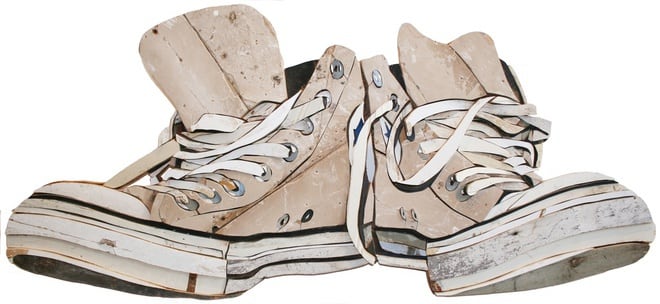
Body Art
Hyperrealist artists are increasingly turning to the human body as a canvas for their work. A model’s torso can be distorted using acrylic paints to trick the human eye into thinking it is something completely different. Some artists have taken this one step further to create intricately painted and hyperreal illusions.
Italian-born artist Johannes Stötter uses people’s bodies as his canvas to create extraordinary hyperrealist depictions of wildlife. Inspired by nature, he turns living models into animals, fruits, flowers, or blends them with exotic surroundings. Each painting takes around five months of planning to prepare and up to eight hours of work to complete.
Hikaru Cho also specialises in body painting but her work explores the sensation of being different to other people. The Tokyo-based artist has also been involved in an Amnesty International campaign where she produced hyperrealistic body paintings to represent various human rights.
Street Art
A new generation of artists are transforming two dimensional concrete walls and tarmac grounds into striking hyperreal illusions. 3-D chalk art is mathematically challenging in that the image can only be seen from a particular angle, but if mastered the result can be extraordinary.
Edgar Mueller is considered to be one of the world’s top 3-D street illusionists. He paints over large areas of urban public life and gives them a new hyperrealistic appearance, thereby challenging the perceptions of passers-by. While going after their daily lives, people change the statement of the paintings by just passing through the scene.
Time, patience, intricate brushstrokes and a well-lit workspace are usually important components in creating hyperrealistic artwork. Despite having barely any of these at their disposal, graffiti artists are also producing hyperrealistic work that could pass as photographs.
British street artist Smug One is renowned for his realistic murals in industrial and abandoned settings. Using aerosol cans alone, his detailed freehand paintings are inspired by popular culture and social issues. He also created London’s largest ever example of 3D photorealistic street art when he teamed up with dairy giant Müller to produce a 100 square meter advertisement mural featuring iconic cartoon characters.
- Tumblr
Add a comment
-
-
 Blog entries
Blog entriesHyperrealism Today
Article on Hyperrealism written by Maggie Bollaert published on EF Magazine -
 Blog entries
Blog entries7 Questions for Plus One Gallery Founder Maggie Bollaert on Why She’s Heralding the Next Generation of Hyperrealist Artists - Artnet Article
The London-based gallery has championed contemporary figurative art since 2001 -
 Blog entries
Blog entriesArtist in Focus - Mike Francis
1938 - 2023 -
 Blog entries
Blog entriesJohannes Wessmark for American Art Collector
-
 Blog entries
Blog entriesMeet the Photorealists
-
 Blog entries
Blog entriesCarl Laubin - Homage to Le Corbusier’s Pessac
-
 Blog entries
Blog entriesArtist in Focus: Ben Johnson
-
 Blog entries
Blog entriesGet Ready for Christmas with the Perfect Stocking Fillers
-
 Blog entries
Blog entriesArtist in Focus: Paul Beliveau
-
 Blog entries
Blog entriesAlexandra Klimas in Landleven Magazine
Alexandra Klimas paints in tribute to the animal -
 Blog entries
Blog entriesPOG's Christmas Suggestions
-
 Blog entries
Blog entriesHAPPY ANNIVERSARY PLUS ONE GALLERY
September 2001 - September 2021 -
 Blog entries
Blog entriesArtist in Focus: David Kessler
-
 Blog entries
Blog entriesArtist in Focus: Sergey Piskunov
-
 Blog entries
Blog entriesArtist in Focus: Alexandra Klimas
-
 Blog entries
Blog entriesLet's Get Ready for Christmas! - Volker Kuhn
November 30, 2020 -
 Blog entries
Blog entriesArtist in Focus: John Salt
-
 Blog entries
Blog entriesFeel Like We’re Living in Surreal Times?
Let These 5 Leading Hyperrealist Artists Ground You -
 Blog entries
Blog entriesAn Interview with Maggie Bollaert
For www.hyperrealism.net -
 Blog entries
Blog entriesArtist in Focus: Andres Castellanos
-
 Blog entries
Blog entriesThe Story Behind the Painting II: Alexandra Klimas
Hope the Donkey -
 Blog entries
Blog entriesCarl Laubin: Elegos
World Trade Centre – Ground Zero -
 Blog entries
Blog entriesAll You Need is Love!
-
 Blog entries
Blog entriesOur December Winter Picks
The ultimate cozy artworks for your living room this winter -
 Blog entries
Blog entriesArtist in Focus: Adolfo Bigioni
-
 Blog entries
Blog entriesThe Story Behind the Painting I: Denis Ryan
-
 Blog entries
Blog entriesArtist in Focus: Young-sung Kim
-
 Blog entries
Blog entriesHiperrealisme | 21 Jun - 30 Sept | Museu del Tabac, Andorra
-
 Blog entries
Blog entriesPlus One Gallery, The Piper Building
-
 Blog entries
Blog entriesHyperrealism: Resources for the Artist
-
 Blog entries
Blog entriesHappy Mother's Day!
She's looked after you all this time, make sure she knows she special! -
 Blog entries
Blog entriesWinter Show
January 17, 2018 -
 Blog entries
Blog entriesPhotorealism of the 1960s
January 10, 2018 -
 Blog entries
Blog entriesThe tradition of still life
November 29, 2017 -
 Blog entries
Blog entriesArtist in Focus: Javier Banegas
November 15, 2017 -
 Blog entries
Blog entriesArtist in Focus: Tom Betts
November 13, 2017 -
 Blog entries
Blog entriesJavier Banegas Private View
-
 Blog entries
Blog entriesNovember News
November 1, 2017 -
 Blog entries
Blog entriesArtist in Focus: Paul Beliveau
October 25, 2017 -
 Blog entries
Blog entriesYOUNG-SUNG KIM
October 18, 2017 -
 Blog entries
Blog entriesSeptember News
September 12, 2017 -
 Blog entries
Blog entriesArtist in Focus: David Kessler
-
 Blog entries
Blog entriesGallery News!
Simon Hennessey wins the acrylic paint category of the Jackson Painting prize 2017 -
 Blog entries
Blog entriesArtist in Focus: Paul Cadden
August 10, 2017 -
 Blog entries
Blog entriesArtist in Focus: Simon Harling
August 4, 2017 -
 Blog entries
Blog entriesArtist in Focus: Javier Banegas
July 21, 2017 -
 Blog entries
Blog entriesArtist in Focus: Francois Chartier
July 10, 2017 -
 Blog entries
Blog entriesAn Interview with Christian Marsh
June 21, 2017 -
 Blog entries
Blog entriesSummer Picks at Plus One Gallery
June 7, 2017 -
 Blog entries
Blog entriesPRIVATE VIEW
Tom Martin: Perpetual Motion May 17, 2017 -
 Blog entries
Blog entriesArtist in Focus: Andres Castellanos
-
 Blog entries
Blog entriesArtist in Focus: Steve Whitehead
-
 Blog entries
Blog entriesGallery News!
Carl Laubin is announced as the Winner of the 2017 Arthur Ross Awards for Excellence in the Classical Tradition, in te Fine Art Category. -
 Blog entries
Blog entriesWorks to Watch
Angus McEwan April 10, 2017 -
 Blog entries
Blog entriesPrivate View
Cynthia Poole: Gold Pieces & other Explorations -
 Blog entries
Blog entriesAn Interview with Cynthia Poole
March 30, 2017 -
 Blog entries
Blog entriesTom Martin : Sculptural Works
May 31, 2017 -
 Blog entries
Blog entriesAn Interview with Tom Martin
May 24, 2017 -
 Blog entries
Blog entriesArtist in Focus: Cynthina Poole
March 22, 2017 -
 Blog entries
Blog entriesArtist in Focus: Denis Ryan
-
 Blog entries
Blog entriesAn Interview with David Finnigan
-
 Blog entries
Blog entriesSpring Picks at Plus One Gallery
-
 Blog entries
Blog entriesArtist in Focus: Simon Hennessey
-
 Blog entries
Blog entriesPlus One Gallery's Top 5 picks this month
-
 Blog entries
Blog entriesWinter Show Private View
-
 Blog entries
Blog entriesWinter Show: Artists
An Interview with David Wheeler -
 Blog entries
Blog entriesWinter Show: Artists
An Interview with JKB Fletcher -
 Blog entries
Blog entriesWinter Show
-
 Blog entries
Blog entriesMERRY CHRISTMAS
from everyone here at Plus One gallery: Maggie, Colin, Rosie, Scarlett and Archie -
 Blog entries
Blog entriesA Sentimental Journey
Carl Laubin's journey in the creation of his solo show -
 Blog entries
Blog entriesNew destination on the Grand Tour
RIBA J article written by Hugh Pearman -
 Blog entries
Blog entriesAn Interview with Carl Laubin
November 30, 2016 -
 Blog entries
Blog entriesCarl Laubin: A Sentimental Journey Private View
With guest speaker Prof. Adrian von Buttlar -
 Blog entries
Blog entriesCountdown to the Carl Laubin Show!
Carl Laubin: A Sentimental Journey -
 Blog entries
Blog entriesNovember News
-
 Blog entries
Blog entriesElena Molinari Interview
Exhibition 'The Alchemy of the Everyday' runs until 19th November November 2nd 2016 -
 Blog entries
Blog entriesPrivate View: Elena Molinari: The Alchemy of the Everyday
-
 Blog entries
Blog entriesElena Molinari: The Alchemy of the Everyday
Invitation -
 Blog entries
Blog entriesElena Molinari: The Alchemy of the Everyday
October 7, 2016 Plus One Gallery is delighted to announce 'The Alchemy of the Everyday', the forthcoming solo show by Uruguayan gallery artist Elena Molinari. -
 Blog entries
Blog entriesWhat's New This October
October 4, 2016 It has been an exciting year so far and it doesn't look to be slowing down with some fabulous new works from the likes of Alexandra Klimas, Pedro Campos and Roger Watt. -
 Blog entries
Blog entriesAn Interview with Tom Martin
October 12, 2016 Plus One Gallery catches up with hyperrealist Tom Martin to discuss his creative process and why he is keen to distance himself from the restraints of a digital camera. -
 Blog entries
Blog entriesReinterpreting the American Dream in hyperrealism
October 5, 2016 -
 Blog entries
Blog entriesPlus One Gallery Official Opening Show
September 22, 2016 -
 Blog entries
Blog entriesOpening Show: Battersea Reach
September 15, 2016 We are excited to launch the opening show at our new premises in Battersea Reach where a range of exquisite hyperrealist art will be on display. -
 Blog entries
Blog entriesA trip down memory lane: Nostalgia in hyperrealism
September 8, 2016 Plus One Gallery examines nostalgia and hyperrealism, looking at vintage iconography, items and period images rendered in hyperrealistic art. -
 Blog entries
Blog entriesNew Artists: New Space
September 1, 2016 With the launch of our new premises at Battersea Reach, we are delighted to unveil the work of some of our latest artists. -
 Blog entries
Blog entriesAn interview with Christian Marsh
-
 Blog entries
Blog entriesArtist in Focus: Thomas Ostenberg
August 25, 2016 A closer look at the work of Thomas Ostenberg, whose sculptures explore the theme of motion and balance, reflecting his personal search for emotional equilibrium. -
 Blog entries
Blog entriesHow to find us at our new premises in Battersea Reach
August 17, 2016 To find Plus One Gallery, please follow these instructions and travel directions. -
 Blog entries
Blog entriesSunshine and seasides: Summer in all of its glory
August 10, 2016 The summer months breathe new life into the canvases of hyperrealists, as flowers come into full bloom and coastlines shimmer in the unwavering sunlight. -
 Blog entries
Blog entriesREMINDER: SUMMER SHOW PRIVATE VIEW
Tuesday 19th July, 6pm-8pm July 14, 2016 -
 Blog entries
Blog entriesHow is consumerist culture represented in hyperrealism?
June 29, 2016 Built around imagery of recognisable brands, celebrity cults and everyday life, consumerist art is rooted in the present social context. -
 Blog entries
Blog entriesPlus One Gallery Summer Show
June 27, 2016 -
 Blog entries
Blog entriesRelocation to Battersea Reach
June 23, 2016 -
 Blog entries
Blog entriesArtist in Focus: David Finnigan
June 22, 2016 British hyperrealist David Finnigan aims to present a style of realism that is both a progressive and experimental development of that genre. -
 Blog entries
Blog entriesAn interview with Elena Molinari
June 15, 2016 Born in Montevideo, Elena Molinari is best known for her still life paintings of fruit and vegetables, often placed in fruit bowls or alongside glass vases and silk cloths. -
 Blog entries
Blog entriesSweet temptation in Hyperrealism
June 9, 2016 Using a sensuous palette of colours and textures, many hyperrealist artists explore temptation, primal pleasures and how food can comfort the soul. -
 Blog entries
Blog entriesAn interview with Nourine Hammad
June 1, 2016 Plus One Gallery interviews hyperrealist artist Nourine Hammad about her unique artistic expression and process. -
 Blog entries
Blog entriesIn full bloom: flowers and their role in hyperrealism
May 25, 2016 Hyperrealists are refreshing the still life genre, invigorating paintings of flowers with contemporary techniques that challenge notions of tradition. -
 Blog entries
Blog entriesArtist in Focus: Craig Wylie
May 20, 2016 Craig Wylie has developed a multi-faceted but singular approach to hyperrealism that seizes the appearance of his subjects with tremendous fluency and ease. -
 Blog entries
Blog entriesGallery News: We are relocating!
May 17, 2016 -
 Blog entries
Blog entriesWhy painting maintains a significant role in a world of instant images
May 11, 2016 In a world where high-tech photography and instant photo messaging is available at our fingertips, what does hyperrealism give us that photography cannot? -
 Blog entries
Blog entriesA taste of your five-a-day in hyperrealism
April 27, 2016 Many hyperrealists explore fruit as a representation the transient nature of life, using colour to remind us of the inevitability of mortality and change. -
 Blog entries
Blog entriesThe influence of pop art in hyperrealism
April 13, 2016 Hyperrealism is often considered an advancement of Pop Art and Photorealism and first came to prominence at the turn of the millennium. -
 Blog entries
Blog entriesGALLERY NEWS: We are relocating!
April 7, 2016 -
 Blog entries
Blog entriesArtist in Focus: Mike Francis
Combining hyperrealism and commercial illustration April 6, 2016 Mike Francis is a photo realist, with a profoundly contemporary imagination, however his technique is deeply rooted in the Old Masters. -
 Blog entries
Blog entriesArtist in Focus: Christian Marsh
Humane landscape hyperrealism March 30, 2016 Christian Marsh's body of work consists of large scale paintings, which explore composite views of various cities around the world. -
 Blog entries
Blog entriesThe hyperrealist travel guide
March 28, 2016 Urban hyperrealism takes the modern metropolis as its subject. It challenges the artist to explore hidden meanings and diversity deeply rooted in society. -
 Blog entries
Blog entriesArtist in Focus: Young-Sung Kim
Challenging society's materialism March 16, 2016 Young-Sung Kim produces hyperreal paintings of contrasting subject matters to illustrate the differences between the living and the material. -
 Blog entries
Blog entriesArtist in Focus: Cynthia Poole
Examining consumerism with nostalgia March 9, 2016 Cynthia Poole’s paintings take food packaging, sweet wrappers and chocolate bars as their subject matter; often with a warm nostalgia for the 1980s confectionery. -
 Blog entries
Blog entriesMother's Day
-
 Blog entries
Blog entriesIs there a place for artistic interpretation in hyperrealistic art?
January 12, 2016 -
 Blog entries
Blog entriesHow does the use of photoshop affect hyperrealistic art?
December 16, 2015 -
 Blog entries
Blog entriesThe difference between Photorealism and Hyperrealism
November 25, 2015 -
 Blog entries
Blog entriesFive of the best hyperrealists on Instagram
November 4, 2015 -
 Blog entries
Blog entriesNew media being used for hyperrealism
Plus One Gallery explores the new media being used within hyperrealism pieces. -
 Blog entries
Blog entriesCities in Real Life: Urban Hyperrealism
Plus One Gallery examines the impact of street culture, through urban art, and its effect on artistic expression within hyper realism pieces. -
 Blog entries
Blog entriesA Brief History of Hyperrealism
August 7, 2015 Plus One Gallery recaps Hyperrealism with a brief look at the historical influences and movements that led to modern day hyper realistic art.
-


